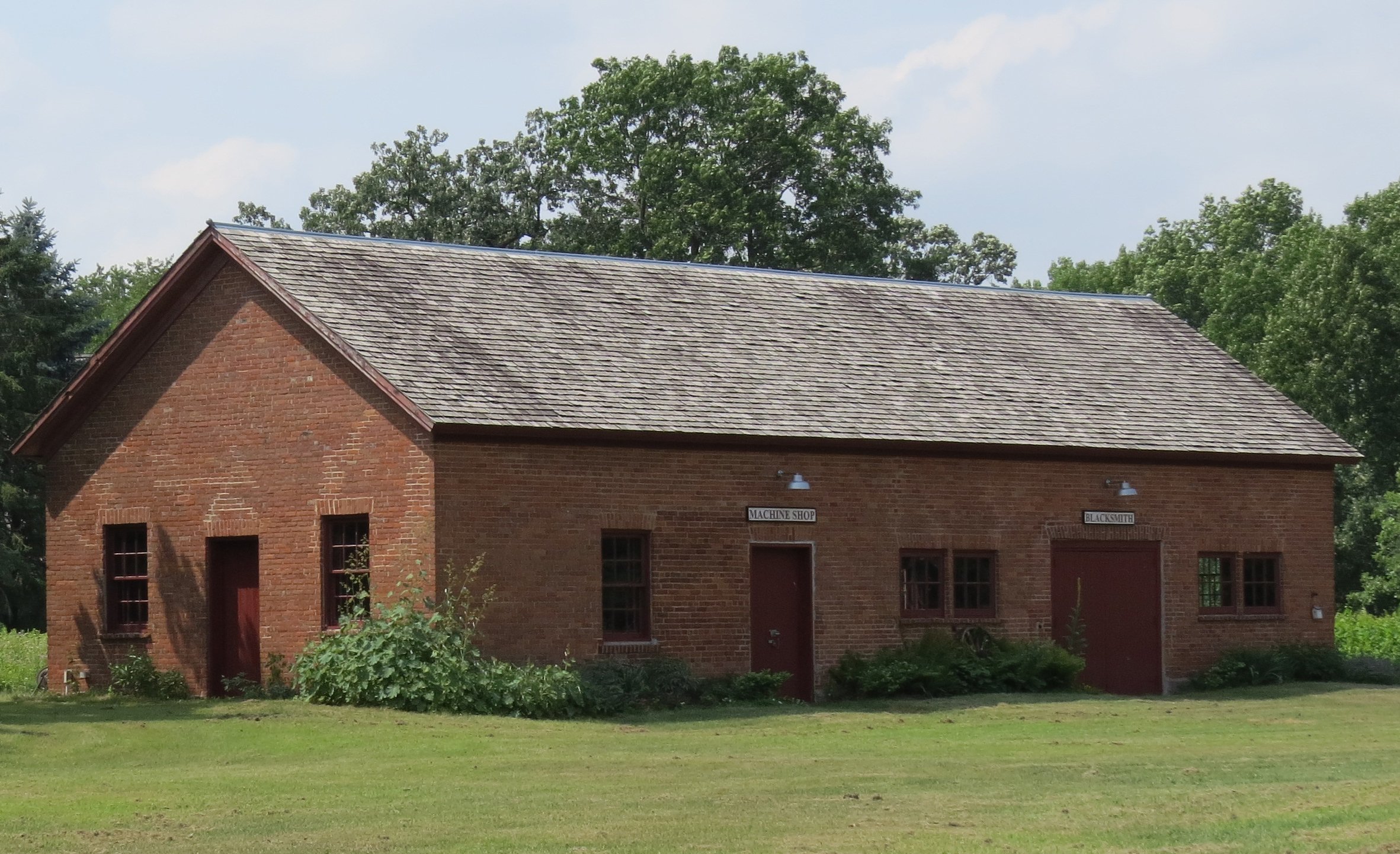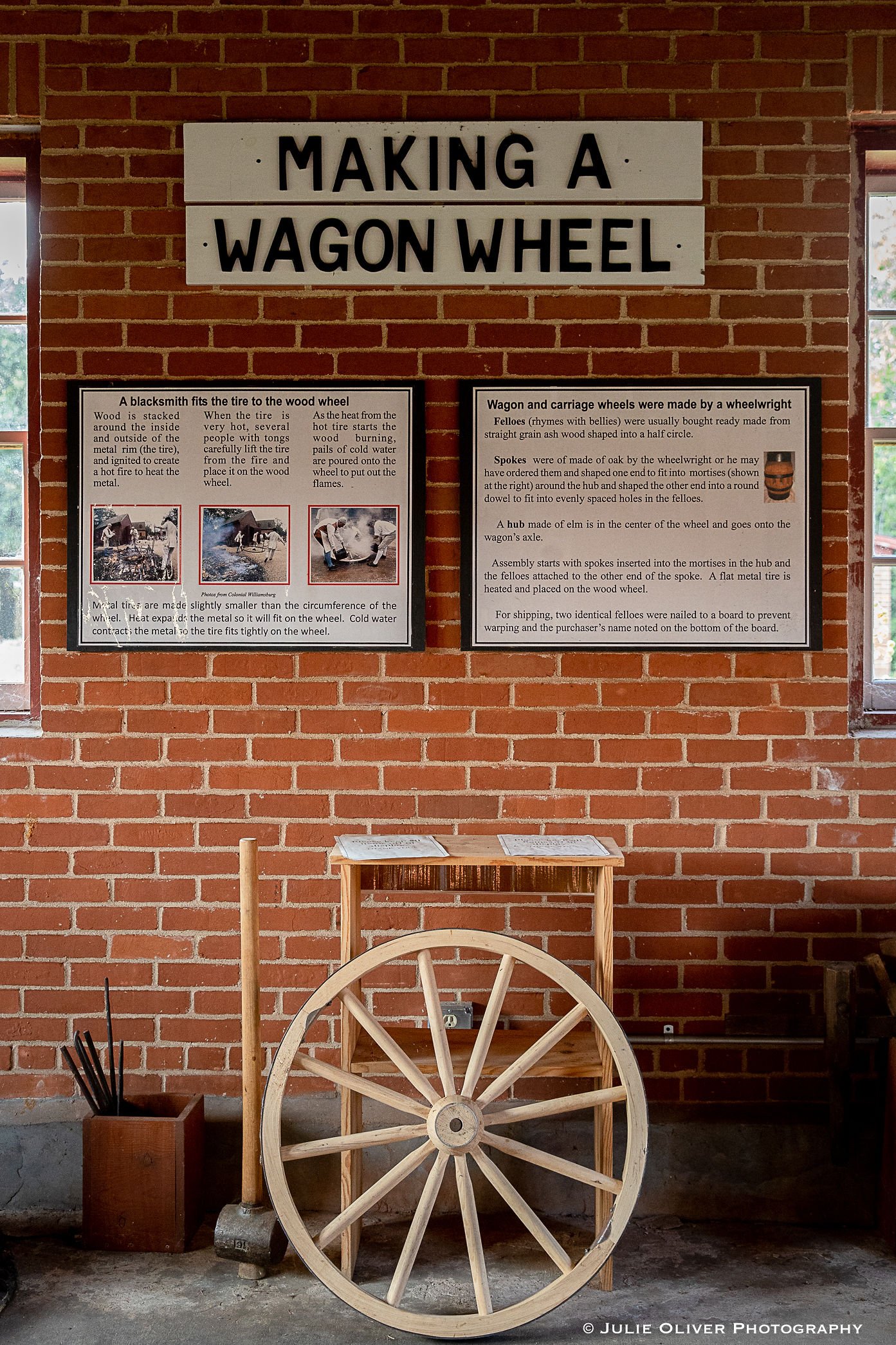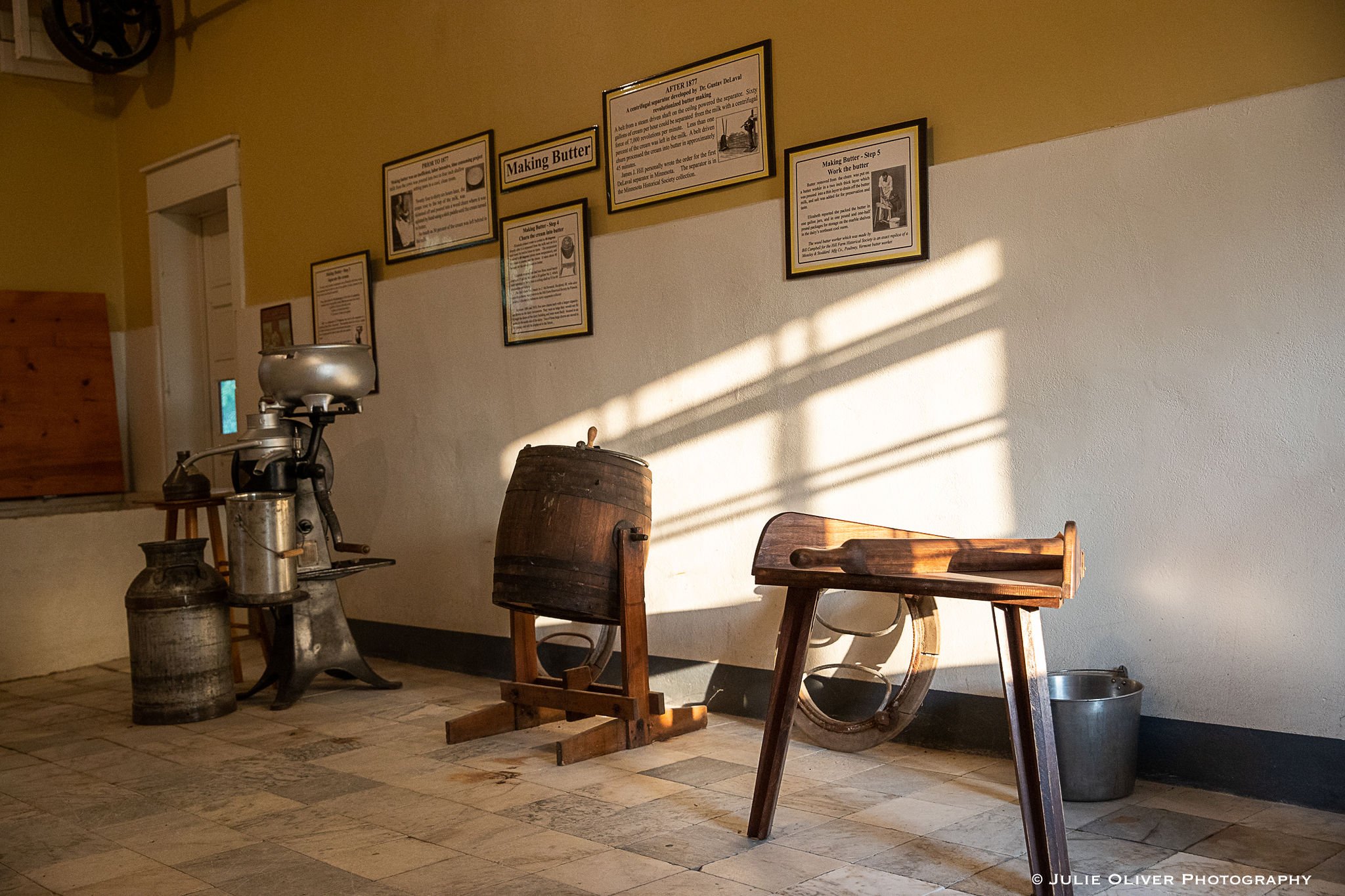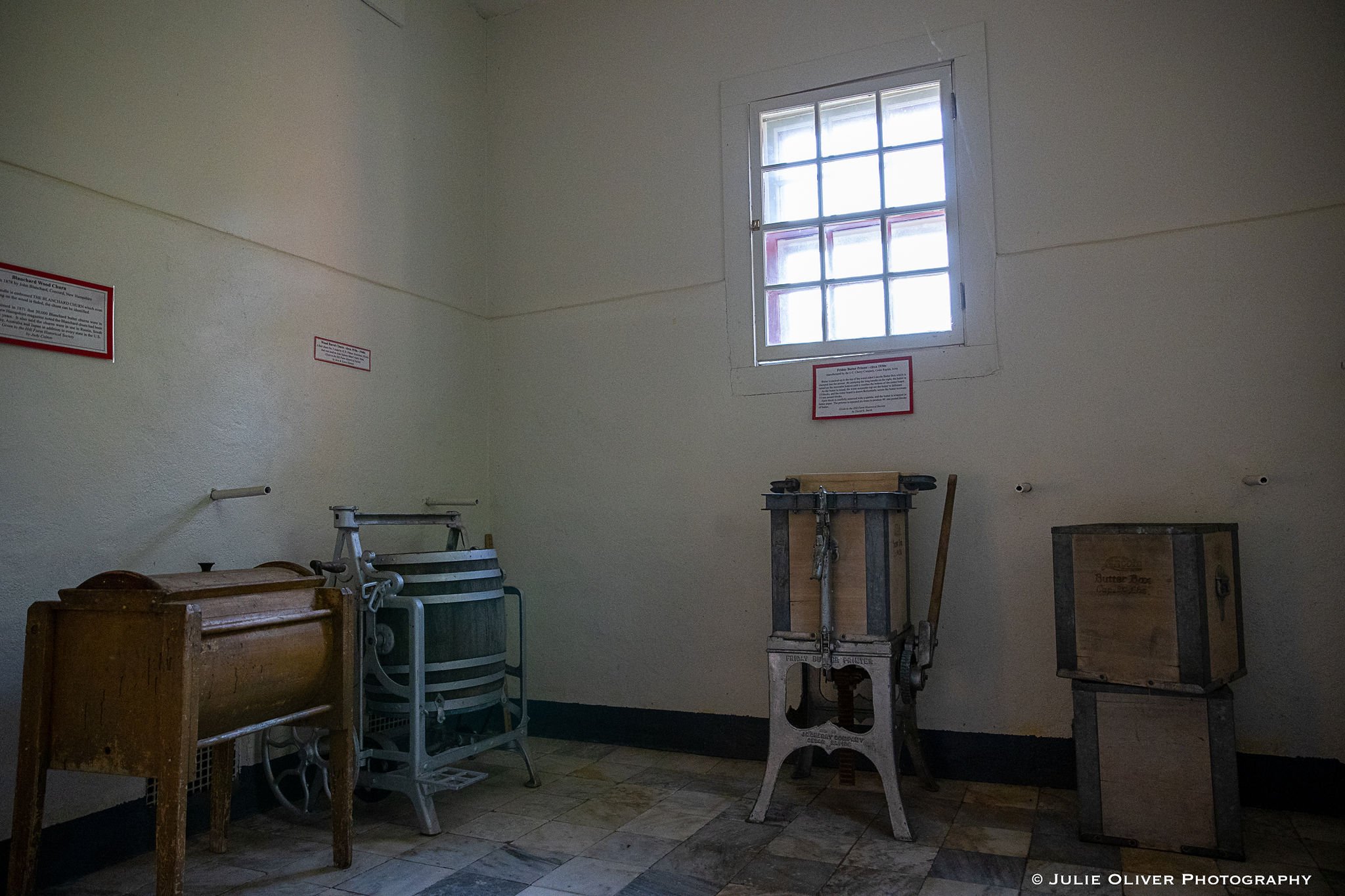
Exhibits Tell The Story
Sign up for a Hill Farm visit and tour
The historic farm is on private land, but public tours are now available May through September. Tours will be every third Thursday of the month at 3:00PM, last approximately 1 hour and accommodate 20 people. More tours may be added depending on demand and availability. If you have any specific requests for a tour, please include it in your registration below. Tours will be $15 per individual or free with a paid membership to the Hill Farm Historical Society.
You will hear the story of the 140-year existence of James J. Hill’s historic stock farm, 1883-2023. The farm served Jim Hills Great Northern Railway, by selecting the best breeds of animals, type of crops, and farming practices to help make the farmer, thus the Great Northern Railway successful in this new northern tier of States.
From the establishment of the farm in the mid 1880’s through the peak years of the late 1800s and early 1900s and ultimately it’s transition to a model community in the late 1940s and 1950s to the unique community we have today.
Sign up below and we will contact you to set up a tour!
The Hill Farm buildings are on the Register of Historic Places. Guided tours are available by appointment. Self-guided tour brochures can be printed by clicking on "North Oaks Farm Self Guided Tour.” Printed brochures may at times be available on the door of the dairy building.
Dairy Building Exhibit
Butter making was the primary use of the building. The exhibit shows how butter was made in 1877. Cream was separated from the milk by putting the milk into setting pans. The next morning the milk was skimmed off and the cream was churned into butter in a hand operated churn. In 1884, a DeLaval separator separated the cream and milk into separate cans in minutes. An engine powered wood barrel churn, and hand operated butter worker finished the butter. In later years, butter working was included in the design of large churns. In 1884, the North Oaks dairy made 535 pounds of butter, in 1900, the total was 2903 pounds.
Machine Shop Exhibit
Presently the Machine Shop has a scale model with photos of the 35 buildings on North Oaks Farm, a copy of an 1892 map of the farm, an exhibit with photos of James J. Hill and Louis W. Hill, Sr. homes, and many other exhibits to tell the story of North Oaks Farm.
Blacksmith Shop Exhibit
An anvil, forge, and blacksmith equipment some of which was in the building was installed to enable a blacksmith to demonstrate how horseshoes, wagon wheels and farm hardware was made. Pictures and a YouTube video show the process of heating the metal tire and attaching it to a wood wagon wheel.
Granary Exhibit
Farm equipment machines that were used to process the crops grown on the farm were left in the granary in various states of disrepair when the farm went idle in the 1990’s. All have been cleaned and restored with display panels noting how each machine was used and the companies who made them. In addition, narrated videos for each machine are available with a push of a button. On the granary walls there are photos of the farm workers in the fields.








North Oaks Farm History
Farm equipment machines that were used to process the crops grown on the farm were left in the granary in various states of disrepair when the farm went idle in the 1990’s. All have been cleaned and restored with display panels noting how each machine was used and the companies who made them. In addition, narrated videos for each machine are available with a push of a button. On the granary walls there are photos of the farm workers in the fields.
In the fall of 1883, James J. Hill paid Charles Gilfillian $50,000 for 3,000 acres much of which is now North Oaks. Gilfilian acquired the land to obtain the water from North Oaks lakes for the growing population in the city of St.Paul.
In the spring of 1884, payroll records list 589 workers-32 carpenters, 119 laborers, a blacksmith, a gardener, a cook, 17 teams of horses and 349 men working on buildings for cows, pigs, sheep, wells and water lines, houses for boats and farm families.
Improvements were underway on Rice Street, the road to Cardigan Junction railroad tracks, that would bring supplies needed to construct the buildings. Almost a million bricks were shipped by rail from a Como area brickyard in St.Paul and brought to the farm by teams of horses.
Hill was innovative and foresighted
He purchased the first DeLaval separator in Minnesota which separates cream from cow’s milk in minutes. The conventional method was to leave the milk in setting pans to settle overnight and skim the cream off the next morning.
He spent more than a quarter million dollars to purchase the finest polled Angus beef cattle and Shorthorn dairy cattle from England and Scotland with a goal of breeding a dual-purpose cow that would provide both milk and beef. Generally, cattle are bred to produce either milk or beef.
Hill advocated the feeding of root crops- rutabagas and turnips, to cattle stating that this would add weight and provide more money at the market. The root crops raised on the farm were stored in the Granary’s large cellar.
As the Great Northern Railroad construction moved westward, Hill was aware that the railroad could not succeed without farmers using the railroad to receive supplies and send their produce to markets.
When droves of immigrant families from Europe were arriving in New York, Hill paid their railroad fare to Minnesota to enable them to settle along the railroad.
Hill advised farmers not to rely on raising wheat for their sole income. He sent a bull to every county along the railroad to be shared by all the farmers in the county to upgrade their stock.
Hill created the “Good Seed Special,” a college on wheels, with agricultural experts aboard to provide the latest information on farming.
In 1900, North Oaks Farm was home to 1,900 animals-158. Ayrshire cows,10 bulls, 43 heifers and calves. The cows produced milk to make butter. There were 160 horses including work horses, brood mares, driving horses and colts. The 750 Berkshire hogs contributed more revenue than any other species. Shropshire sheep- 300 in all – were sheared yearly and the wool, mutton, and hides sold on the market. Turkeys, geese, and ducks totaled 400. And that is not all. Twenty-seven buffalo were fenced off by themselves on 160 acres, and in the next field there were 22 elk.